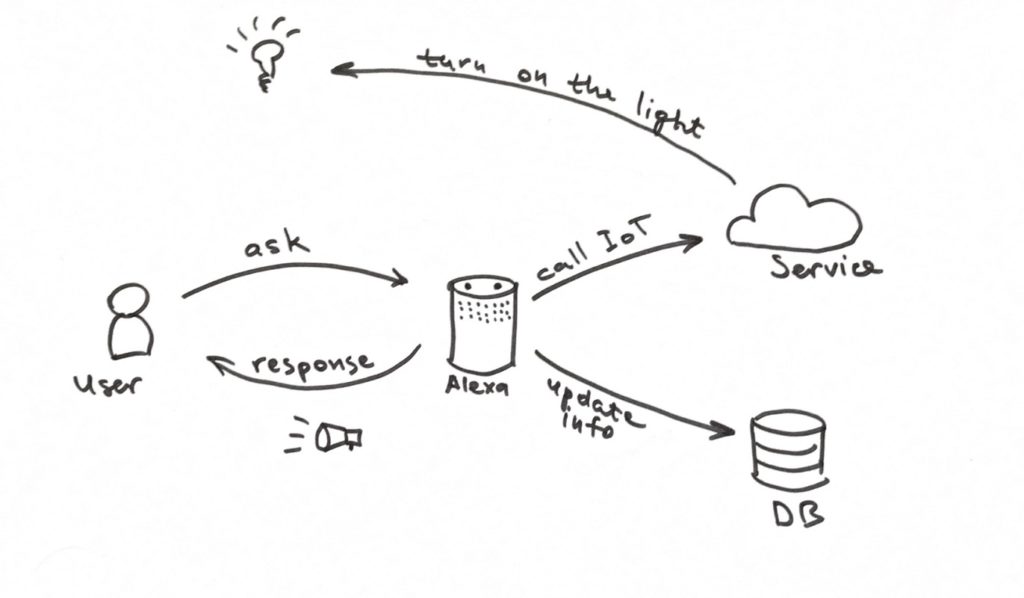- It doesn't matter if you barely use it to automate a few lights in your home, or if you have a large network of smart products connected to each other, chances are you don't know how Alexa works.
- We review the internal process that allows this voice assistant, and many others, to distinguish what you are saying and act accordingly, in order to get to know it thoroughly
The Smart Home Hub or Home Center are those devices that function as central elements of smart homes or Smart Home. From them, we can control all smart products in each environment. You may even have several gadgets connected through the Amazon voice assistant in your home. Interestingly, despite this, you probably don't really know how Alexa works. We see it ..
Like Google's Assistant and Apple's Siri, Alexa is the voice assistant developed by the giant Amazon. Thinking of becoming strong also in hardware and software, Jeff Bezos's firm has been investing millions of dollars in the development of Alexa for years, for many users the best voice assistant right now.
In fact, it doesn't matter if you barely use it to automate some lights in your home or if you take full advantage of it. The important thing is that if you understand how it works, you can find another meaning to its adoption ..
So how does Alexa work?
In general, Alexa works by processing requests or voice commands, from the simplest to the most complex, such as when we ask her to turn on the lights or play a song.
That's thanks to a machine learning technique called Natural Language Processing, or NLP. We are talking about Natural Language Processing, which is the manipulation of natural language forms
How does Alexa use natural language processing step by step?
It all starts with Signal Processing , the technique that helps voice-based systems remove noise that prevents accurate data processing, things like background noise, etc., that tend to get in the way..
The goal of signal processing is to allow Alexa to identify and silence ambient noise such as TVs, radios, other humans, and so on so that it can focus solely on the sent voice command or request .
After successfully processing the incoming signals, Alexa performs wake word detection; During this process, Alexa looks at the target signal for a wake word , usually Alexa or "Hey Alexa."
When it detects a wake word, Alexa sends the original command to
cloud-based speech recognition software. The software then takes the audio signal and converts it to text using a built-in decoder .
The decoder breaks down the order into pronunciation and pitch and compares those pronunciations to similar pronunciations in a sound database. Those pronunciations are analyzed and then implemented .
The above process is performed by Alexa Voice Service , which runs on Amazon Web Service (AWS), so we could define it as the brain behind all Alexa-powered products, as it handles all the complex operations, such as automatic speech recognition (ASR) .

How does Alexa use Amazon Artificial Intelligence?
Just as Alexa first records your speech because interpreting the sounds requires a lot of computing power, the sound input is sent to Amazon's servers to be interpreted .
There Alexa parses/interprets the audio input into individual sounds and queries an audio database containing various word pronunciations to find the closest matches to the audio input.
After this, Alexa identifies the keywords contained in the already recognized audio input and performs the corresponding functions required to satisfy the command/request within the keywords.
If you ask the Amazon assistant about the weather , in the background a request for information will be made to a weather API service that will provide this data, so that Alexa can share it with you. We could say that it is the investment process, in which we obtain answers.
The importance of past experiences
Artificial Intelligence also improves its performance by learning from past experiences. Understanding the previous requests and commands as experiences, which weave their "neural networks" .
Those commands and requests train Alexa to know the details in the voice and the nuances of who is communicating. And it does this by leveraging supervised machine learning algorithms .
That's why when you're setting up Alexa for the first time, she'll ask you to speak to her for a bit, as a test.
If you liked this article, you could use some of the best Alexa tricks.